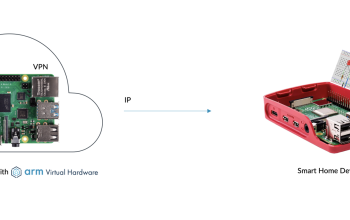Let’s be honest—quantum computing used to feel like sci-fi. But this year? It’s rewriting the rules of tech right under our noses. From drug discovery to unbreakable encryption, the hardware breakthroughs in 2024 aren’t just incremental—they’re seismic. Here’s how.
The Quantum Leap: Hardware That’s Actually Working
Gone are the days of lab-bound prototypes collecting dust. Companies like IBM, Google, and startups you’ve probably never heard of are rolling out fault-tolerant qubits—quantum bits that don’t collapse at the slightest disturbance. Imagine a Jenga tower that doesn’t topple when you breathe on it. That’s the stability we’re seeing now.
Key Hardware Advances in 2024
- Error-corrected qubits: Early models could barely handle a single calculation before failing. Now, we’ve got systems that self-correct mid-operation—like a GPS recalculating your route without missing a turn.
- Cryogenic cooling breakthroughs: Quantum chips need temperatures colder than space. New cooling systems are smaller, cheaper, and—get this—use 40% less power.
- Photonic quantum processors: Light-based qubits that could make room-temperature quantum computing a reality. No more waiting for liquid helium deliveries.
Industries Getting Shaken Up (Right Now)
Sure, quantum computing sounds abstract until you see it solving real problems. Here’s where it’s making waves this year:
| Healthcare | Simulating molecular interactions for new drugs—cutting R&D time from years to months. |
| Finance | Optimizing trading algorithms so complex, they’d take classical computers centuries. |
| Cybersecurity | Both creating and cracking encryption (yes, it’s a double-edged sword). |
| Logistics | Route optimization for global shipping networks, saving millions in fuel costs. |
The Elephant in the Lab: What’s Still Holding Us Back
For all the progress, quantum computing isn’t plug-and-play yet. The hardware still has… quirks:
- Scale: Most systems max out at under 1,000 qubits. For reference, cracking modern encryption might need millions.
- Cost: Building a quantum computer still costs more than a small country’s GDP. (Okay, slight exaggeration—but not by much.)
- Hybrid models: Right now, quantum works best paired with classical computing—like training wheels on a rocket.
Why This Year Feels Different
Something shifted in 2024. Maybe it’s the fact that:
— Cloud providers now offer quantum-as-a-service, letting companies test algorithms without buying hardware.
— China just unveiled a 512-qubit processor that actually works outside a vacuum chamber.
— A startup in Boston claims they’ll have a 10,000-qubit system by 2026 (we’re skeptical, but intrigued).
It’s not theory anymore. It’s tools in the toolbox.
Where Do We Go From Here?
The bottleneck isn’t ideas—it’s engineering. Better materials. More stable qubits. Ways to keep quantum states coherent longer than a soap bubble. Honestly? The next decade will either be a golden age… or a graveyard of overpromises.
But this year—2024—is when quantum computing stopped being a “maybe someday” and started being a “how soon can we scale this?”




